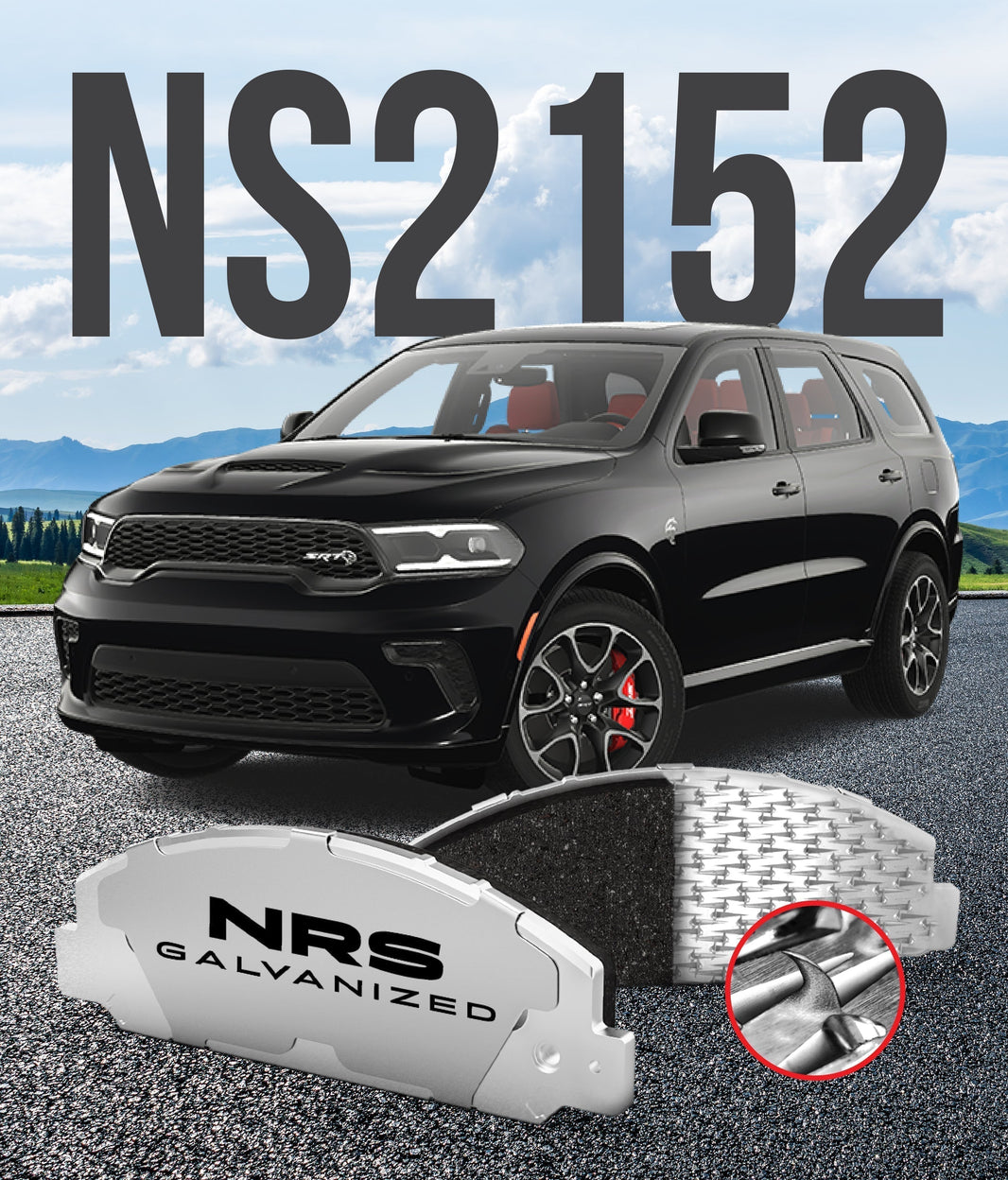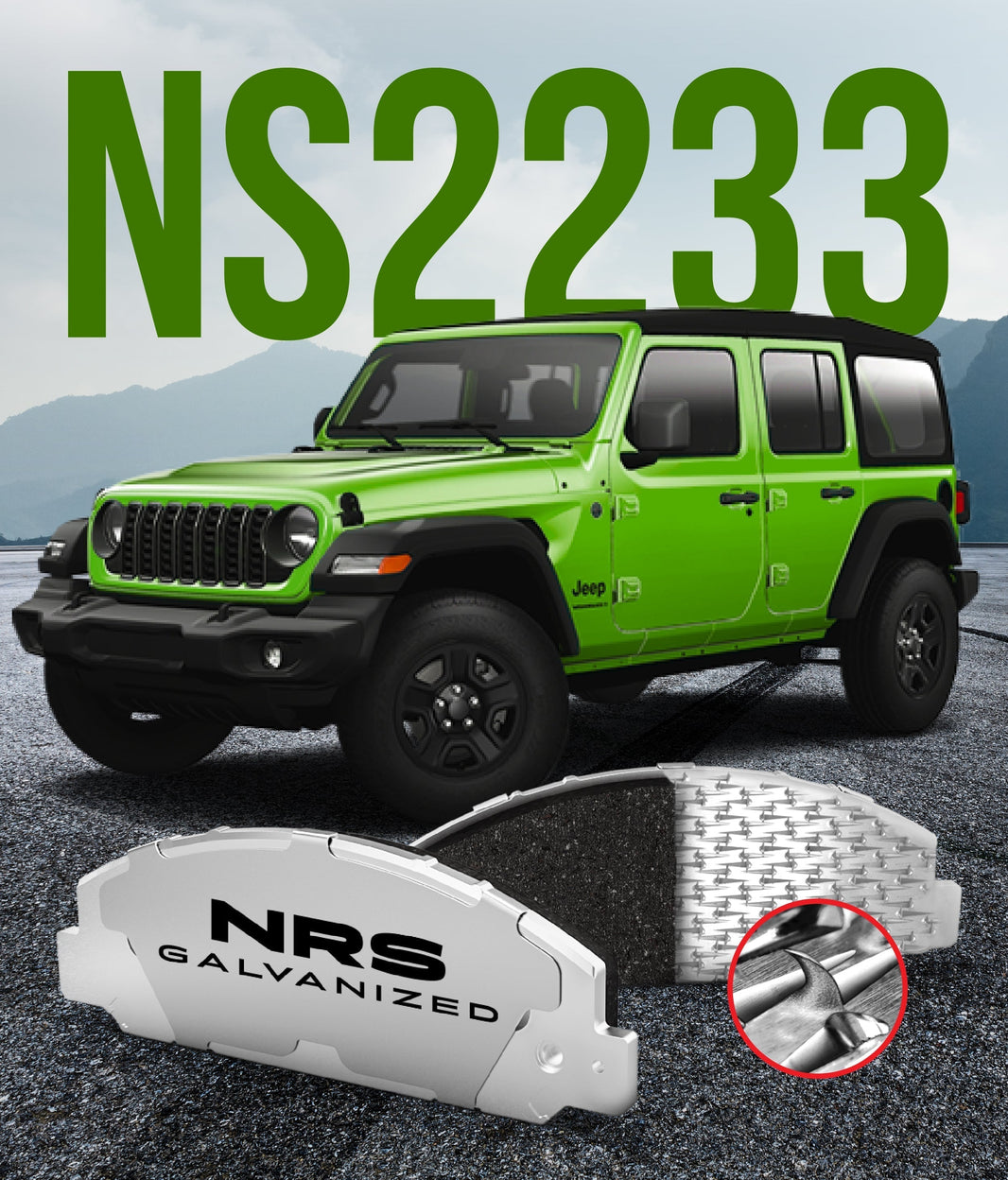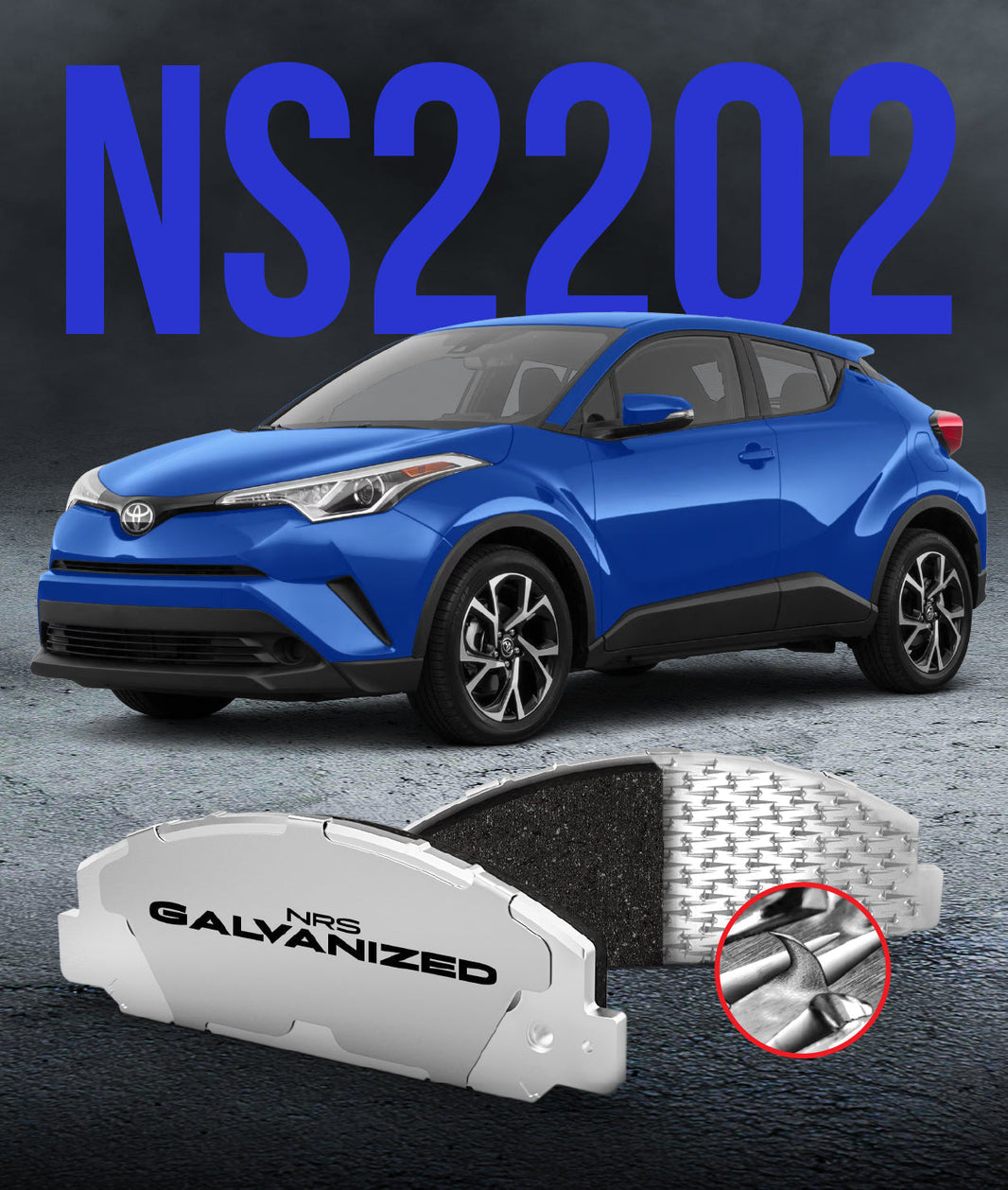When it comes to brake pad performance, safety, and longevity, the method of attaching the friction material to the backing plate plays a crucial role. While some manufacturers use welded mesh attachment as a bonding method, this approach has notable weaknesses that can lead to premature brake failure and increased maintenance costs.
NRS Brakes has set the industry standard with its PACE award winning mechanical attachment technology, offering superior durability, reliability, and safety. In this article, we will explore why NRS mechanical attachment is the best choice for brake pads and why welded mesh fails to meet the demands of modern braking systems.
The Importance of a Strong Bond in Brake Pads
Brake pads experience extreme forces during operation. High temperatures, intense friction, and rapid pressure changes put enormous stress on the bond between the friction material and the backing plate. If this bond fails, the friction material can delaminate, leading to brake failure—a serious safety risk.
Traditionally, brake pads rely on either adhesives, welded mesh, or mechanical attachment to secure the friction material to the backing plate. While adhesives can degrade over time due to heat and moisture, welded mesh was developed as an alternative solution. However, welded mesh attachment has critical design flaws that can compromise performance and safety.
The Problem with Welded Mesh Attachment
Welded mesh attachment involves affixing a thin wire mesh to a thick (9mm) steel backing plate. The idea is that the mesh provides a textured surface for the friction material to bond with, improving adhesion. However, the welding process itself presents a major challenge.
1. Weak Bond at the Weld Points
The fundamental problem with welding mesh to a thick steel backing plate is the heat distribution. Welding requires enough heat to fuse the mesh to the plate, but the heat required to achieve the proper weld onto a thick steel plate can burn through the thin mesh, weakening the entire system. Conversely, if too little heat is applied, the weld won’t properly penetrate the backing plate, also resulting in weak attachment points.
A detailed explanation of this issue is discussed in welding industry resources, such as Unimig’s guide on welding thin metal to thick metal. This problem means that the mesh can easily separate from the steel backing plate, leading to friction material delamination over time.2. Increased Risk of Delamination
Because welded mesh attachment relies on thin mesh as the bonding medium, it is prone to separation under extreme braking conditions. Delamination occurs when the friction material detaches from the backing plate, leading to reduced braking effectiveness and a higher risk of brake failure.
This is especially problematic in demanding environments, such as:
- Heavy-duty commercial vehicles
- Performance vehicles
- Vehicles frequently used in mountainous or high-temperature conditions
- Emergency response vehicles
In these applications, brake pads experience extreme heat and stress. If the friction material begins to separate due to a weak bond, braking efficiency declines, increasing the likelihood of accidents.
3. Higher Maintenance Costs and More Frequent Replacements
Because welded mesh attachment is more prone to failure, brake pads using this method require more frequent replacements and reduce braking efficiencymaking them unsafe!
For fleet operators, logistics companies, and vehicle owners looking for long-term cost savings, welded mesh attachment presents a hidden financial burden. While these brake pads might seem sufficient initially, their shorter lifespan means higher costs over time.
The Superiority of Mechanical Attachment: The NRS Brakes Advantage
Recognizing the flaws in welded mesh attachment, NRS Brakes developed an innovative solution: mechanical attachment technology. This method eliminates the risk of bond failure by using a direct mechanical connection between the friction material and the backing plate.
1. A Permanent Mechanical Bond
Unlike welded mesh, which relies on weak weld points, NRS Brakes’ mechanical attachment system physically secures the friction material to the backing plate. The NRS metal teeth are precision-engineered protrusions that bite into the friction material, ensuring a permanent bond.
This technology guarantees that the friction material will not delaminate, even under extreme stress or high temperatures. It is a solution designed for longevity, reliability and SAFETY.2. Withstands Extreme Conditions
One of the key advantages of mechanical attachment is its resilience in extreme conditions. Whether it’s:
- High-performance driving that generates intense heat
- Heavy braking in commercial trucks
- Continuous stop-and-go traffic in urban environments
- Harsh weather conditions such as rain, snow, and road salt
NRS Brakes’ mechanical attachment remains intact, ensuring consistent braking performance over time. The NRS mechanical attachment structure eliminates the possibility of heat-induced bond failure, which is a major issue with welded mesh attachment.
3. Longer Brake Pad Life and Cost Savings
Because NRS Brakes’ mechanical attachment eliminates delamination, NRS brake pads last significantly longer than those using welded mesh. This means:
- Less frequent replacements
- Lower maintenance costs
- Reduced downtime for fleet vehicles and commercial applications
For vehicle owners and fleet managers, these benefits translate to real financial savings over time. Instead of dealing with the unpredictability of welded mesh failures, mechanical attachment provides confidence that the brake pads will perform reliably throughout their lifespan.
4. Proven Award-Winning Technology
NRS Brakes’ mechanical attachment system has been recognized for its innovation and performance. The PACE Award-winning NRS technology is a testament to its superiority over traditional methods.
As more industries recognize the importance of long-lasting, safe braking solutions, mechanical attachment is becoming the preferred choice over outdated welded mesh bonding techniques.
The Future of Brake Pad Attachment: A Safer, More Durable Solution
The braking industry is continuously evolving, with safety, efficiency, and longevity driving innovation. The shift away from welded mesh attachment towards mechanical attachment is a crucial step forward in ensuring better, longer-lasting, and safer brake pads.
As brake pads continue to face higher demands in performance applications, mechanically attached friction material will become the new standard. It eliminates the risks associated with welded mesh while delivering a stronger, safer, and more cost-effective brake pads for consumers and businesses alike.
For those looking to maximize their braking system’s performance and durability, NRS Brakes’ mechanical attachment technology is the clear choice. Unlike welded mesh, which suffers from weak weld points and the risk of delamination, NRS Brakes deliver unmatched safety, reliability, and longevity—ensuring that your vehicle’s braking system remains in peak condition for years to come.




